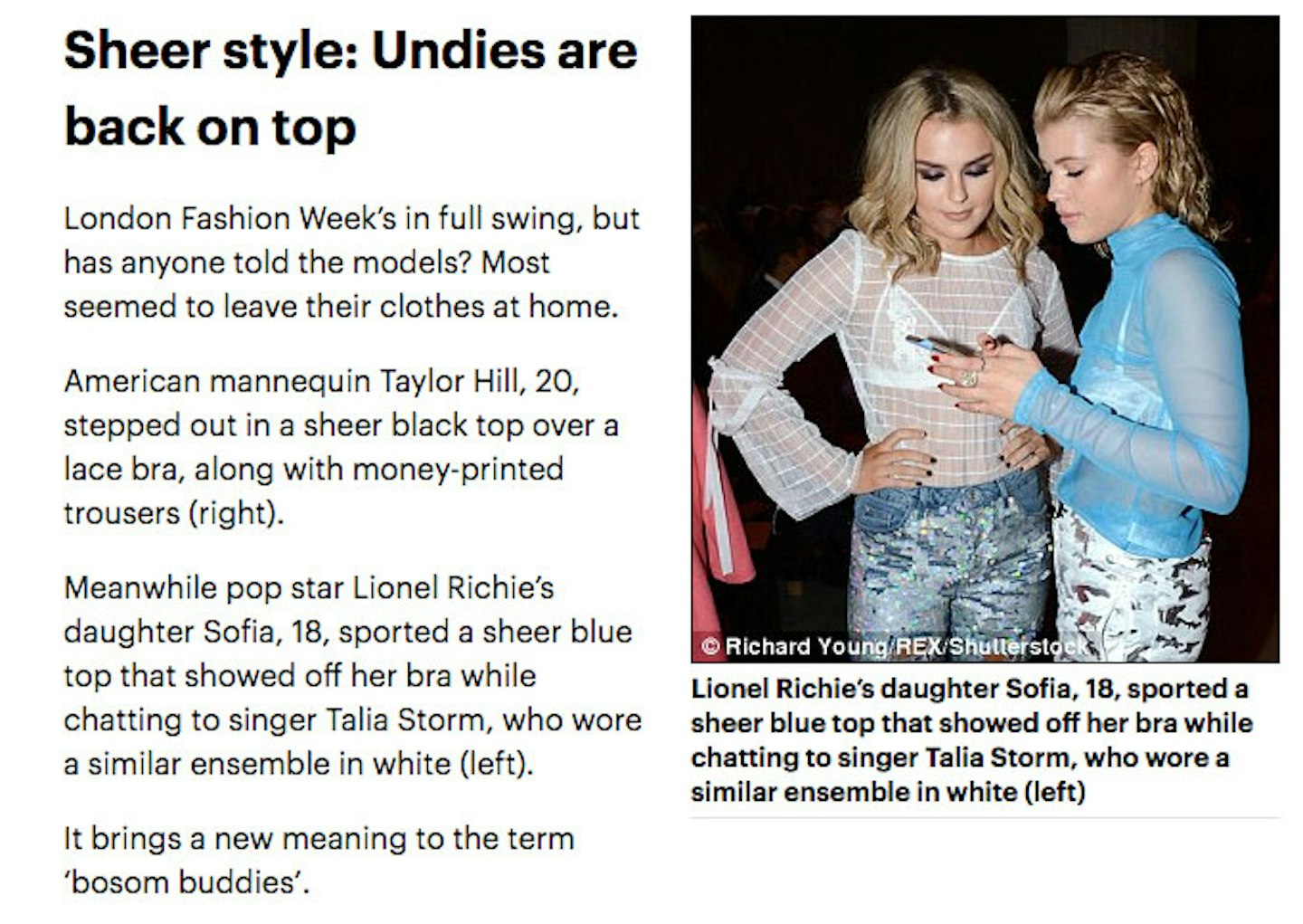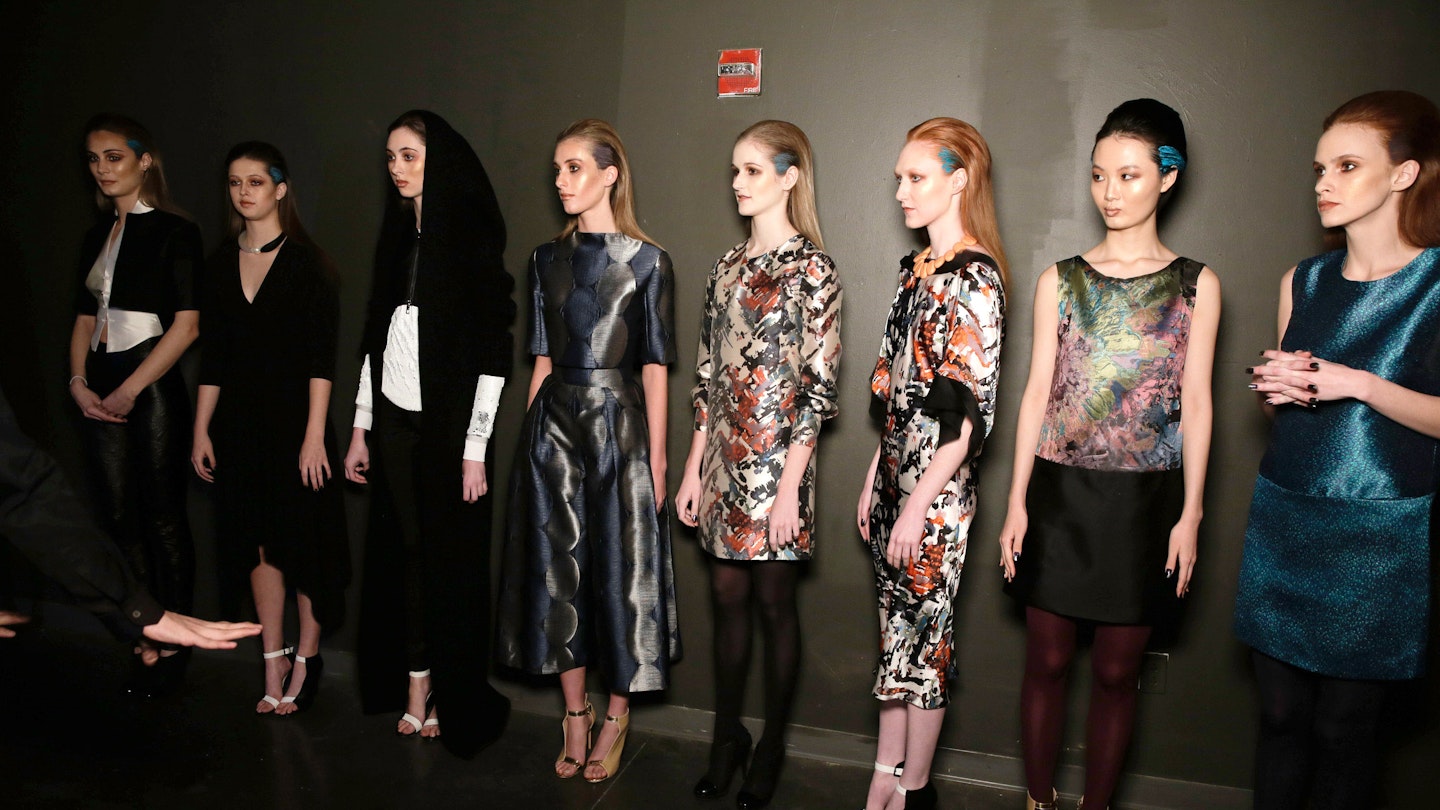Undoubtedly you’re familiar with one of them: ‘a dummy used to display clothes in a shop window’. You might be less familiar with the other, ‘a person employed by a designer or shop to model clothes’. In the English language, ‘mannequin’ is another word for ‘model’. In French, it is the word for ‘model’.
Used in that way in this country around the time of the turn of the century, it was only in the late 1930s, that ‘mannequin’ took on it’s other meaning, that of ‘the dummy’. Today, the dummy meaning is generally acknowledged – because obviously, calling a model by a term that also describes a characterless figurine isn’t what you might call a compliment...
Nonetheless, it is still a recognised definition. Yesterday, a story written about Taylor Hill in The Daily Mail, introduced its readers to the 20-year old model by prefacing her name with the description: ‘American mannequin’.

Whilst linguistically this might be correct, a pertinent question to ask is: should we still be using it in that context?
Let’s start by looking at the role of a model...
Their duty, like that of a mannequin, is to display – ergo advertise – clothes. It’s London Fashion Week this week, and each day, legions of women walk up and down the catwalks showing off the innovative new designs of the AW17 collections. A good model, it can be argued, is an ‘invisible’ one; one with no eye-catching features that might distract buyers, editors, front row celebrities – and customers watching online – from the splendour of the clothes adorning them.
They must play the role of blank canvas, onto which designers craft their vision for the new season. For all intents and purposes, models must look like mannequins.
But do they?
Let’s look at the people who become models. I don’t know what a generic human being looks like, but it’s widely accepted that models are not generic. They are extraordinary. Not just extraordinary in terms of beauty, but extraordinary in many other ways too. For instance, they might be extraordinarily tall or have extraordinary skin or hair. People talk of models having ‘that model look’ but what is that exactly? What defines ‘the model look’? Tall and slim, yes, but I do not know of any ‘one’ description.
No one can say Leomie Anderson, Peyton Knight, Ruth Bell and Adwoa Aboah for instance, have the same – or even a similar – look. They are uniquely different.
Mannequins, however, are not different. They are the same, exactly the same. You cannot distinguish one mannequin from another. They have no interesting features; in fact, most have no features at all – beyond that of an oval face and long limbs.
However much you try to make models look the same for the sake of fashion, to me, they all look different. So I do not accept that in the looks department, models can be considered mannequin-like.
The next point to address is that, if you agree that models do not look uniform, can the term still be applied to them because it’s their job to act like mannequins?
Arguably, yes. They are responsible for wearing clothes, and that’s it. On catwalks, they are not required to display personality because it’s not their job to reveal their own characters. As they make their way down the catwalks, beyond that of cold indifference, their face must give away nothing. Because again, that would divert attention from the clothes; and the clothes are supposed to reflect the passions of the designer...
Yes, the role of a catwalk model is to act like a mannequin and it’s hard to dispute that. If models were intent on ensuring they were the focus, they wouldn’t get work selling collections, correct?
What is interesting to highlight though, is that this isn’t the case with all models, and the ones I’m referring to are those who find themselves elevated from ‘mere model’ status, to that of the realms of the ‘supermodel’. It wasn’t just that the 90s ‘Big Six’ – including Naomi Campbell, Linda Evangelista, Kate Moss and Christie Turlington – were beautiful. It was that they also had huge personalities – fun, outlandish, entertaining. It was the full package – their looks and their charisma – which propelled them to ‘super’ stardom.
The same can be said for modern-day supermodels, like Cara Delevingne. Unlike celebrity models Kendall Jenner and Gigi Hadid – who were already famous and found themselves at the top of their game, largely on account of their jaw-dropping number of followers and the level of publicity their involvement would inevitably attract – Cara made it to the top because of her beauty and her particular brand of, ironically, anti-model-like behaviour. Was she bucking the trend? Absolutely. Did it pay off? Well, her 37.5million followers seem to suggest so.
So yes, whilst it might be the job of a model to be – like a mannequin – devoid of personality, those that achieve worldwide success are the ones who let aspects of themselves shine through on the catwalk anyway.
Should we still be referring to models as mannequins? In my view, no. It may mean ‘model’ in French. It may have formerly been a well-known term for ‘a model’ in English. But today it’s most often associated with dummies in a shop window. And regardless of how their work might require them to look or behave, describing models in the same way we do dummies, should not be in fashion.
READ MORE: Why I Don't Want To Win The Lottery
READ MORE: The Terrifying Truth About Beckileaks
